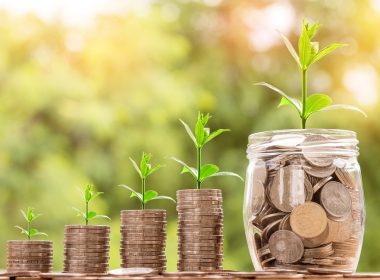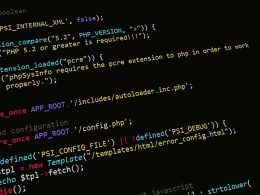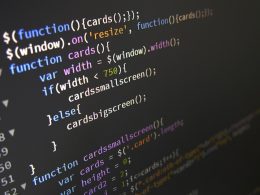Flutter is a popular open-source mobile app development framework that helps developers build high-performance, visually appealing, and interactive mobile applications for both iOS and Android platforms. In this article, we will outline the best practices, tips, and essential guidelines to help you master Flutter development. We will also provide code examples to help you better understand the concepts.
1. Use Stateless Widgets Wisely
One of the key features of Flutter is its use of widgets, which are the building blocks of the UI. Stateless widgets are widgets that do not change over time, while Stateful widgets can hold mutable values. When building your app UI, it is important to use stateful widgets judiciously. Additionally, use stateless widgets where possible as they help optimize your app for better performance.
Here’s an example of using a stateless widget:
“`dart
class MyApp extends StatelessWidget {
@override
Widget build(BuildContext context) {
return MaterialApp(
home: Scaffold(
appBar: AppBar(
title: Text(‘My App’),
),
body: Center(
child: Text(‘Hello World!’),
),
),
);
}
}
“`
2. Leverage the Hot Reload Feature
The Hot Reload feature is a valuable tool for enhancing productivity in Flutter development. It enables developers to instantly view changes made to the code without having to reload the entire app, thus reducing the amount of time it takes to see the impact of code changes.
Here’s an example of using the Hot Reload feature:
“`dart
import ‘package:flutter/material.dart’;
void main() {
runApp(MyApp());
}
class MyApp extends StatelessWidget {
@override
Widget build(BuildContext context) {
return MaterialApp(
home: Scaffold(
appBar: AppBar(
title: Text(‘My App’),
),
body: Center(
child: FlatButton(
onPressed: () {
print(‘Button pressed’);
},
child: Text(‘Press Me’),
),
),
),
);
}
}
“`
3. Use Themes for Consistent UI Design
Flutter supports the use of themes, which can be used to define common styles across your app. By defining a theme, you can create consistent UI design elements such as fonts, colors, and typography. This not only eases the design and development process but also ensures a consistent look and feel of the app across different platforms.
Here’s an example of defining a theme:
“`dart
import ‘package:flutter/material.dart’;
void main() {
runApp(MyApp());
}
class MyApp extends StatelessWidget {
@override
Widget build(BuildContext context) {
return MaterialApp(
theme: ThemeData(
primaryColor: Colors.blue,
accentColor: Colors.green,
fontFamily: ‘Roboto’,
textTheme: TextTheme(
bodyText2: TextStyle(fontSize: 16.0),
headline1: TextStyle(fontSize: 24.0),
),
),
home: Scaffold(
appBar: AppBar(
title: Text(‘My App’),
),
body: Center(
child: Text(
‘Hello World!’,
style: Theme.of(context).textTheme.headline1,
),
),
),
);
}
}
“`
4. Optimize Your Layouts with Flexbox
Layouts in Flutter can be optimized using Flexbox, a styling technique that allows elements on the UI to be dynamically resized and repositioned based on the screen size. This means that you can have a responsive UI without having to create separate layouts for different screen sizes.
Here’s an example of using Flexbox:
“`dart
import ‘package:flutter/material.dart’;
void main() {
runApp(MyApp());
}
class MyApp extends StatelessWidget {
@override
Widget build(BuildContext context) {
return MaterialApp(
home: Scaffold(
appBar: AppBar(
title: Text(‘My App’),
),
body: Flex(
direction: Axis.vertical,
children: [
Flexible(
flex: 2,
child: Container(
color: Colors.blue,
height: 100,
),
),
Flexible(
flex: 3,
child: Container(
color: Colors.green,
height: 100,
),
),
Flexible(
flex: 1,
child: Container(
color: Colors.red,
height: 100,
),
),
],
),
),
);
}
}
“`
5. Debugging Your App
Debugging is an essential part of any Flutter development project. With Flutter, debugging is made easy through the use of the Flutter DevTools, which provide a suite of tools for debugging and profiling your app. These tools can help you identify and solve performance issues and other errors in your code.
Here’s an example of using the Flutter DevTools:
“`dart
import ‘package:flutter/material.dart’;
void main() {
runApp(MyApp());
}
class MyApp extends StatelessWidget {
@override
Widget build(BuildContext context) {
return MaterialApp(
home: Scaffold(
appBar: AppBar(
title: Text(‘My App’),
),
body: Center(
child: FlatButton(
onPressed: () {
print(‘Button pressed’);
},
child: Text(‘Press Me’),
),
),
),
);
}
}
“`
In conclusion, mastering Flutter development involves understanding the best practices and essential tips outlined in this article. By using stateless widgets judiciously, leveraging the Hot Reload Feature, using themes for consistent UI design, optimizing layouts with Flexbox, and debugging your app using Flutter DevTools, you can create high-performance, visually-appealing, and interactive mobile apps for both iOS and Android platforms.








